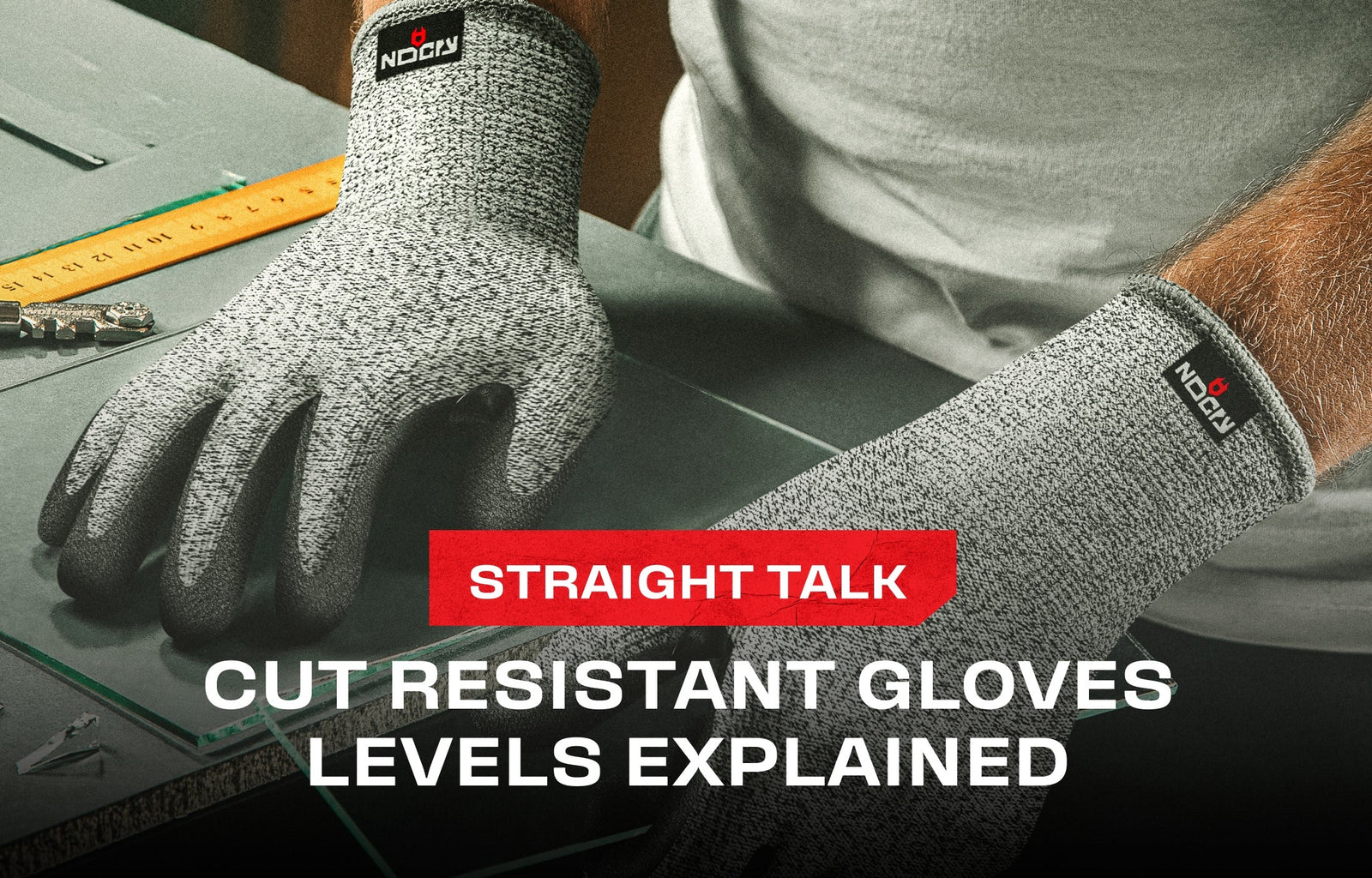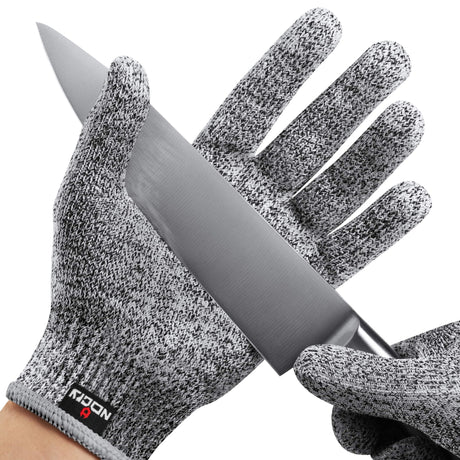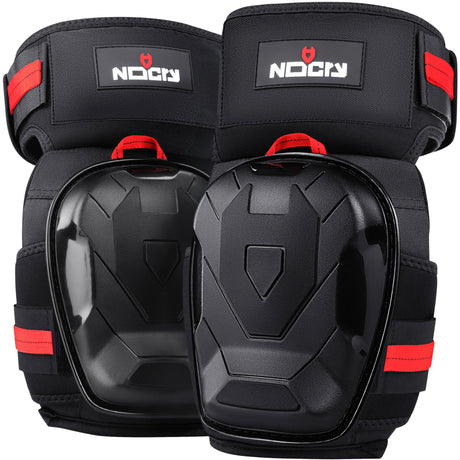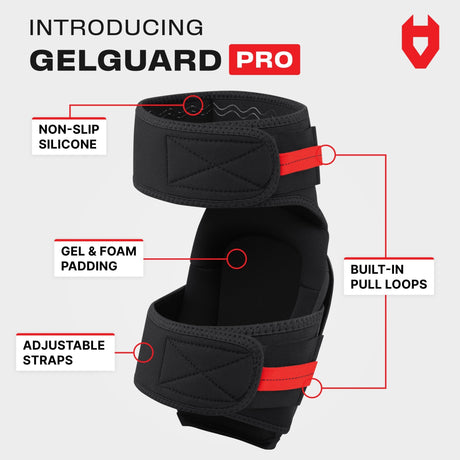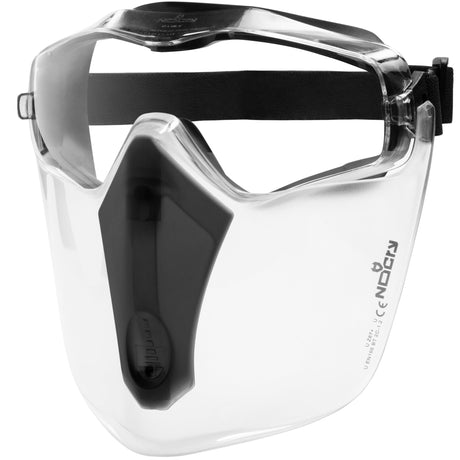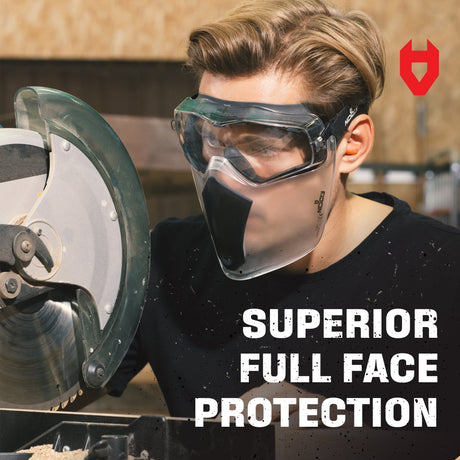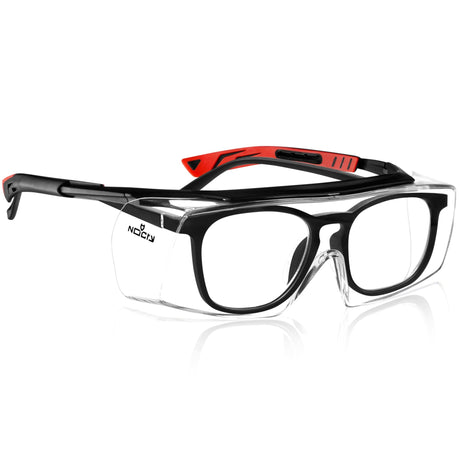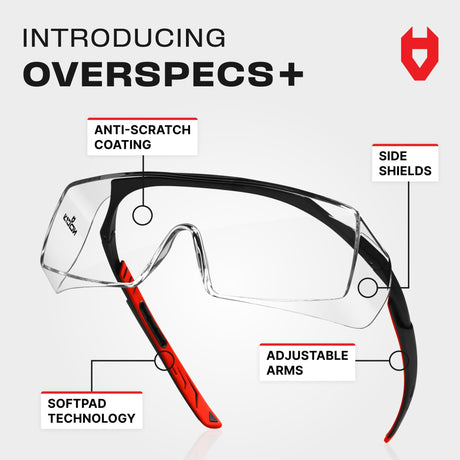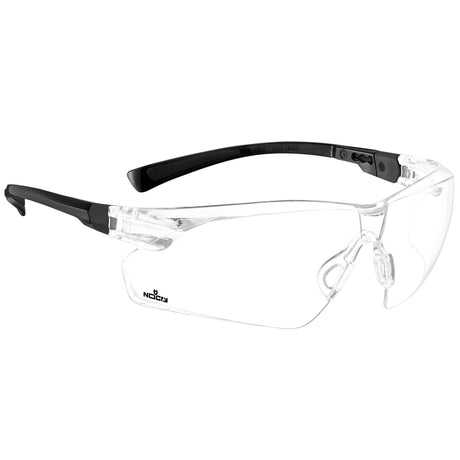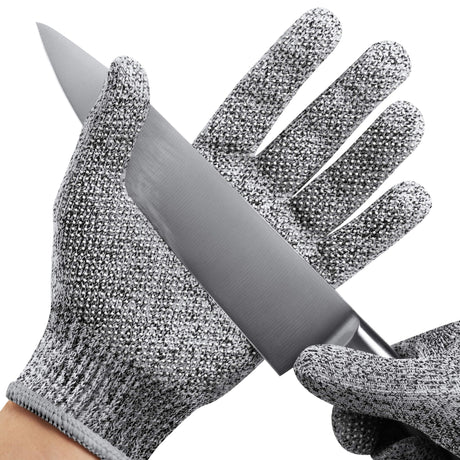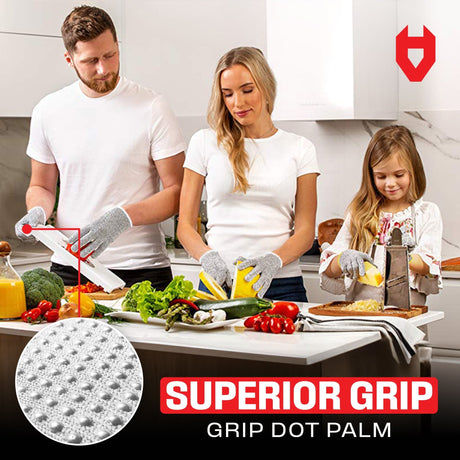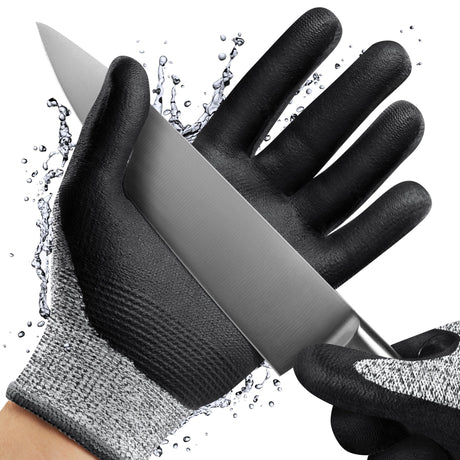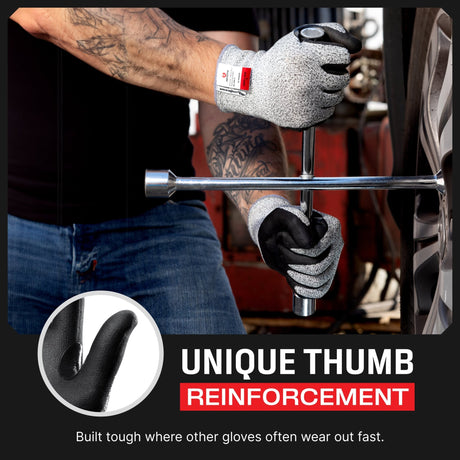Key Takeaways
- ANSI cut levels range from A1 to A9, with higher numbers offering greater protection against sharp objects.
- A1–A3 gloves are suitable for light-duty tasks like food prep, packaging, or general handling.
- A4–A6 gloves are ideal for medium-risk jobs such as construction, glass handling, or sheet metal work.
- A7–A9 gloves are best for high-risk environments where heavy blades or forceful cutting is involved.
- Higher cut resistance usually means lower flexibility — always choose gloves based on the balance between protection and dexterity your task requires.
In many industries, hand protection is critical to ensure worker safety, especially when working with sharp tools, machinery, or hazardous materials. One of the most essential pieces of personal protective equipment (PPE) in these environments is cut-resistant gloves. These gloves are designed to reduce the risk of cuts, lacerations, and punctures, making them a vital tool in sectors like manufacturing, construction, food processing, and even in everyday tasks like handling glass or sheet metal.
However, not all cut-resistant gloves are created equal. They are graded based on their cut resistance levels, and it’s crucial to select the right gloves for the task at hand. In this article, we’ll delve into the key factors behind cut-resistant gloves and break down the different ANSI cut resistance levels to help you make an informed decision.

What Are Cut-Resistant Gloves?
Cut-resistant gloves are made from specialized materials that are designed to withstand sharp objects and reduce the risk of injuries. These materials include high-performance fibers such as Kevlar, Dyneema, HPPE (High-Performance Polyethylene), and metal mesh. The construction of these gloves involves layering and weaving these fibers to create a barrier strong enough to resist sharp edges or blades.
While no glove can offer complete cut-proof protection, high-quality cut-resistant gloves can significantly reduce the chance of injury, allowing workers to handle potentially dangerous materials with greater confidence and safety.

How Cut Resistance is Measured: ANSI Cut Levels
The ANSI cut levels are part of the ANSI/ISEA 105 standard, which rates gloves on a scale from A1 to A9, with A1 being the lowest level of cut resistance and A9 offering the highest. The ANSI cut resistance levels are determined by testing how much force (in grams) is needed to cut through the glove material with a straight blade.
Here’s a breakdown of the different ANSI cut levels:

How to Choose the Right Cut-Resistant Gloves
Selecting the correct cut-resistant gloves involves assessing the specific risks in your work environment. Here are some key factors to consider:
- Task Requirements: Understand the nature of the work. For example, light assembly tasks may only require A2 or A3 gloves, while jobs involving heavy machinery or sharp materials may need A5 or higher protection.
- Comfort and Dexterity: High cut resistance often comes with thicker, less flexible materials. You’ll need to balance protection with dexterity. Workers who require precise hand movements (e.g., in electrical work or delicate assembly) may need gloves that provide protection without sacrificing flexibility.
- Grip and Coating: Cut-resistant gloves often come with additional coatings like nitrile or polyurethane, which enhance grip and abrasion resistance. Choose the appropriate coating based on the material being handled.
- Environment: Consider the working conditions. If you’re working in oily, wet, or chemical-laden environments, gloves with additional protective features such as chemical resistance or waterproofing might be required.
Best Cut-Resistant Gloves for Each Task
When choosing the right cut-resistant gloves, it’s essential to match the ANSI cut resistance level with the demands of your task.
Here’s a breakdown of NoCry’s CutGuard series, with each glove designed to meet different protection and performance needs:
1. NoCry CutGuard Ultra-Elastic Cut-Resistant Gloves (ANSI Level A2)
Best For: General construction, food prep, light assembly, and tasks requiring dexterity with moderate cut risk.
Features: Lightweight, breathable design with enhanced grip for secure handling of tools and materials. Food-safe and perfect for environments like kitchens or handling smaller tools.
Why Choose Them: Ideal for tasks requiring both precision and protection. These gloves provide reliable cut resistance while remaining comfortable and flexible.

2. NoCry CutGuard+ Enhanced Grip Cut-Resistant Gloves (ANSI Level A2)
Best For: Automotive work, metal fabrication, glass handling, and food processing, where workers need a strong grip and protection from sharp or slippery materials.
Features: Enhanced with grip dots to prevent slippage, ideal for handling smooth or wet items. Despite their strength, they are designed to be breathable and comfortable for long periods of wear.
Why Choose Them: These gloves strike the perfect balance between cut protection and comfort, making them ideal for workers handling sharp tools or materials in challenging environments. They provide a secure grip and are built to last through repeated, tough tasks, all while keeping hands cool and comfortable.

3. NoCry CutGuard Pro Tough Coated Cut-Resistant Gloves (ANSI Level A6)
Best For: Heavy-duty tasks such as metalwork, construction, and tasks involving sharp, jagged materials in wet or oily environments.
Features: These gloves come with a nitrile-dipped waterproof coating, adding superior grip and cut resistance in environments with liquids or oils. Built for long-lasting use in high-risk industries.
Why Choose Them: With a higher ANSI cut level and a nitrile coating for extra durability and grip, the CutGuard Pro gloves are the perfect choice for extreme cut hazards and wet conditions.

4. NoCry CutGuard+ Reinforced Cut-Resistant Gloves (ANSI Level A2)
Best For: Metal fabrication, construction, and heavy machinery handling, where workers frequently deal with sharp, heavy, and abrasive materials.
Features: Reinforced fingers for added protection in vulnerable areas, ensuring these gloves withstand tough environments without compromising flexibility.
Why Choose Them: Perfect for high-risk tasks where finger protection is crucial, offering a combination of durability and comfort.

5. NoCry CutGuard+ Touch Screen Cut Resistant Gloves (ANSI Level A2)
Best For: Industries like logistics, warehousing, and manufacturing, where handling sharp objects and using touchscreens go hand in hand.
Features: Touchscreen-compatible fingertips allow workers to operate smartphones, tablets, or other touchscreen devices easily.
Why Choose Them: The combination of cut resistance and touchscreen functionality makes these gloves a versatile option for modern work environments.

6. CutGuard Pro Stainless Steel Cut Resistant Gloves (ANSI Level A6)
Best For: Tough jobs in construction, landscaping, manufacturing, and automotive work — anywhere sharp tools and rugged materials are part of the daily grind.
Features: Made from a high-tech mix of stainless steel, polyethylene, glass fiber, and spandex, with silicone grip dots for secure handling, even when wet or oily.
Why Choose Them: These gloves offer level A6 cut resistance, top-tier durability, and day-long comfort. They're built for serious work, from forestry to factory floors, where precision, protection, and endurance matter most.

Conclusion
Cut-resistant gloves are a crucial aspect of workplace safety, especially in industries where sharp tools, machinery, or materials pose a risk to workers. Understanding the various cut resistant gloves levels and standards is essential to ensure the correct level of protection for the task at hand.
By selecting the right gloves with an appropriate cut level, you can significantly reduce the risk of injury and improve overall safety in the workplace. Always remember that safety should be the top priority when it comes to choosing PPE, and cut-resistant gloves play a vital role in keeping workers’ hands protected.
FAQ
What are cut resistant gloves made of?
Cut-resistant gloves are made from a combination of high-performance materials that are specifically designed to resist cuts and abrasions. Some of the most common materials include:
- Kevlar: A strong synthetic fiber known for its high cut resistance.
- Dyneema: A lightweight and durable material that offers excellent cut protection and is often used in food processing.
- HPPE (High-Performance Polyethylene): A common material in cut-resistant gloves that provides both flexibility and protection.
- Stainless steel fibers: Woven into the fabric to add extra strength and durability.
- Glass fibers: Used to reinforce the fabric for added cut resistance.
What makes gloves cut resistant?
Cut-resistant gloves are designed to resist cuts through the use of specific materials and construction techniques. These materials (like Kevlar, Dyneema, and stainless steel fibers) are incredibly strong, which helps prevent the sharp edges of blades or tools from cutting through the fabric. The construction often involves a tightly woven structure or layers of materials that add extra protection. The cut-resistant level is classified according to standards (like ANSI/ISEA), which measure how much force is required to cut through the glove material.
Are cut resistant gloves washable?
Yes, most cut-resistant gloves are washable. However, the method of washing may vary depending on the material. For instance:
- Kevlar gloves can often be machine-washed with mild detergent.
- Dyneema and HPPE gloves may require more careful cleaning and air drying. Always check the manufacturer’s care instructions to avoid damaging the fibers or weakening the cut resistance.
Are cut resistant gloves waterproof?
Not all cut-resistant gloves are waterproof by default. While some cut-resistant gloves may have a waterproof coating or lining, many are not designed to be fully waterproof. If you need cut-resistant gloves for wet environments, look for options with a waterproof coating or nitrile-dipped gloves, which provide both cut resistance and water protection.
Can you still get cut wearing a cut resistant glove?
Yes, it is still possible to get cut while wearing cut-resistant gloves, especially if they are not the correct cut-resistance level for the job. Cut-resistant gloves reduce the risk of cuts, but they are not completely cut-proof. Cuts can occur if the gloves are subjected to more force than they are rated to withstand or if the gloves are damaged.
How do knife proof gloves work?
Knife-proof or cut-resistant gloves work by using materials that are difficult to penetrate. These materials are either woven tightly or constructed in layers that disperse the force of a blade. When a sharp object contacts the glove, the tightly bound fibers or metallic components resist the blade’s movement, making it harder for the knife to cut through the material. Different gloves have different cut resistance levels based on the materials used and the construction, which means they can withstand various degrees of force and sharpness.
Why does high cut resistance mean lower flexibility?
High cut resistance gloves are designed to protect against sharp objects and heavy-duty tasks, but this added protection often comes at the cost of flexibility. The materials used, like steel fibers or thick coatings, can make gloves stiffer and less comfortable for tasks that require fine motor skills. For example, jobs like working with sheet metal, handling glass, or cutting materials require high cut resistance to prevent injury. However, tasks like assembling small parts, working with electronics, or precision tasks might demand more flexibility for better grip and dexterity. When selecting gloves, it’s essential to choose based on the specific task at hand — if safety is a priority, go for cut resistance; if flexibility and dexterity are more important, choose a more flexible glove.
Is high cut resistance important for cooking?
In the kitchen, cut resistance is essential, especially for tasks like slicing, dicing, or handling sharp knives. High cut resistance gloves can protect against accidental cuts, but they tend to offer less flexibility. While this is fine for jobs where protection is key (e.g., working with heavy knives or cutting through tough food), it can feel restrictive during tasks that require dexterity (like chopping small vegetables or working with delicate ingredients). When choosing gloves for cooking, consider the balance between cut protection and flexibility — gloves with a moderate level of cut resistance may be ideal for most tasks in the kitchen, allowing protection without sacrificing too much control.

